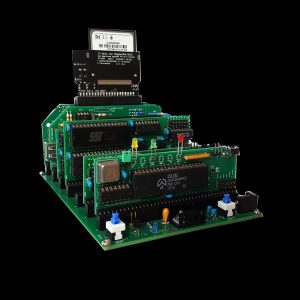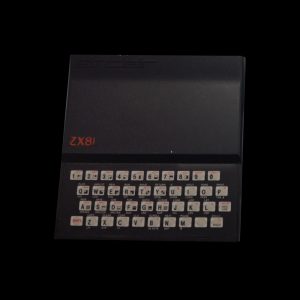
Welcome to Vintage Vibe
Here is my collection of vintage computers and electronics.
I'm a bit of a hobbyist and have done a variety of different projects and restorations.
I will be adding new posts from time to time as I complete each project. Here are some of my recent posts below ... enjoy.
About me..
Kim -Uno
Posted by musovern on May 23rd, 2019 in Kim-Uno, Single Board Computers | 0 comments
The KIM Uno is a small “open-source hardware” project to build a replica of the classic 1976 KIM-1 computer. It doubles up as a 6502 programmable calculator. It costs about $10 in commonly available parts (board & parts without case or power supply), but provides a faithful KIM-1 ‘experience’. An atMega328 (Arduino Pro Mini, actually) mounted on the back of the board contains all the logic and memory.
The KIM Uno has some of the most interesting 6502 software of that early period built in to ROMs. So you can also play chess, use it as a programmable calculator and experience some of the earliest software development tools written by pioneers like Steve Wozniak, Jim Butterfield and Peter Jennings – dating back to a period when microprocessors had only been in existence for 2-3 years. Software archaeology!
Read More...RC 2014
Posted by musovern on May 23rd, 2019 in RC2014, Single Board Computers | 1 comment
RC2014 is a simple 8 bit Z80 based modular computer originally built to run Microsoft BASIC. It is inspired by the home built computers of the late 70s and computer revolution of the early 80s. It is not a clone of anything specific, but there are suggestions of the ZX81, UK101, S100, Superboard II and Apple I in here. It nominally has 8K ROM, 32K RAM, runs at 7.3728MHz and communicates over serial at 115,200 baud.
Read More...ZX-81
Posted by musovern on May 19th, 2019 in Sinclair, Vintage Computers | 0 comments
The ZX81 is a home computer that was produced by Sinclair Research and manufactured in Dundee, Scotland by Timex Corporation. It was launched in the United Kingdom in March 1981 as the successor to Sinclair’s ZX80 and was designed to be a low-cost introduction to home computing for the general public. It was hugely successful, and more than 1.5 million units were sold before it was discontinued. The ZX81 found commercial success in many other countries, notably the United States where it was initially sold as the ZX-81. Timex manufactured and distributed it under licence and enjoyed a substantial but brief boom in sales. Timex later produced its own versions of the ZX81 for the US market: the Timex Sinclair 1000 and Timex Sinclair 1500. Unauthorized clones of the ZX81 were produced in several countries.
Read More...

